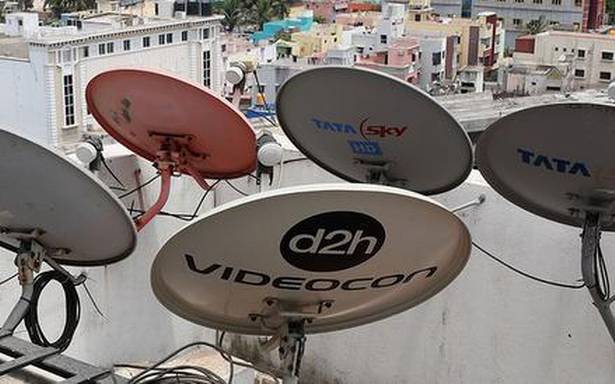In a breather to broadcasters and pay-TV viewers, the Telecom Regulatory Authority of India (TRAI) has decided to put off by four months the implementation of the new tariff order. The order, which puts a cap of ₹12 on the price of TV channels offered as part of a bouquet, was slated to be implemented from December 1. It will now come into effect from April 1, 2022.
This comes after concerns were raised over the possibility of higher payout for consumers. TRAI had earlier said that it will review the time-frame for implementation of the NTO 2.0 given that 150-160 million pay television homes will have to rejig the bouquets and channels to subscribe based on the revised tariff plans.
New timelines
In a letter to industry stakeholders, TRAI set new timelines for broadcasters to submit details about their new bouquets and MRPs for channels as well as for DTH service providers and MSOs to get consumers’ choices for subscriptions per the new regulatory framework. A copy of the letter was reviewed by BusinessLine.
The letter states that broadcasters will need to submit their reference interconnect offer (RIO), which details the composition of bouquets and MRPs of channels by December 31 to the regulator. It added that those who have already submitted their RIOs per the new framework can also revise the MRPs and bouquets till December-end.
At the same time, Distribution Platform Operators, which are DTH service providers and Multi System Operators, will need to submit their Distributor Retail Price of channels and bouquets by January 31 to TRAI, per the new framework. From February 1 to March 31, they will need to obtain the consumers’ choices for subscription of new bouquets or channels and ensure that consumers migrate to new subscription plans, in accordance with the new regulatory framework, by April 1, the letter added.
TRAI said that it has received representations from various industry stakeholders raising “certain practical issues” in terms of time constraints in migrating consumers to the new tariff scheme. It added that it would be prudent to give “sufficient time” to avoid any inconvenience to consumers.
“The Authority is of the view that paucity of time should not come in the way of smooth implementation of the new regulatory framework in seeking informed choices of more than 150 million pay television consumers. Therefore, sufficient time should be given to the service providers to upgrade their IT systems and incorporate various channels and bouquets before offering the same to consumers,” the letter stated.
New tariff order
The new tariff order, NTO 2.0 has met with much resistance from broadcasters since its announcement. In a nutshell, it seeks to cut the ceiling price on a TV channel from ₹19 to ₹12, should the channel be a part of a bouquet purchased by the consumer. After losing the legal battle to scrap the TRAI order in both the Bombay High Court and the Supreme Court, broadcasters responded by removing premium channels from bouquets and raising their prices from ₹20 to ₹30.
The decision by major broadcasters such as Star, Zee, Sony and Viacom18 to increase the MRP of their popular channels and keep them out of bouquets further compelled cable operators to urge the regulator to keep the implementation of NTO 2.0 in abeyance. For instance, the All India Digital Cable Federation had urged TRAI to revisit the provisions of the order vis-à-vis the sustainability aspect of the implementation of this framework.
TRAI’s warning
In the aftermath of broadcasters publishing their new channel prices last month, TRAI had warned the operators against arbitrary channel pricing. TRAI officials had told BusinessLine earlier that some broadcasters are “exploiting” the freedom available in the new framework for pricing of a la carte television channels. The regulator warned that it will not shy away from reviewing “certain provisions including forbearance” to check prices in the larger interest of the consumers.
The forbearance clause gives broadcasters the freedom to price their a la carte channels. Analysts believe that broadcaster’s exorbitant a la carte channel prices, as a response to NTO 2.0, will be especially detrimental for pay-TV users, who will end up paying much more to keep watching premium content. Experts believe that this will only hasten the trend of pay-TV subscribers transitioning to OTT.

























